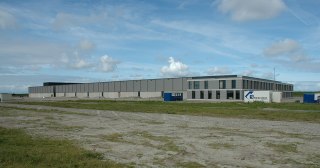By Jason Hoover

In New Castle County, we face a choice. New technologies like artificial intelligence and cloud computing are creating demand for a new kind of infrastructure: data centers. These massive facilities are quickly becoming essential to the digital economy. But they are also some of the most energy-hungry, land-intensive, and community-disruptive projects being built anywhere in the country.
This isn’t just a land use debate. It is a test of how we manage growth and whether we allow corporate profits to come at the expense of residents and taxpayers.
That is why Ordinance 25-101 was introduced. It is the first attempt in New Castle County to place basic regulations on where and how data centers are built. The ordinance establishes protections for nearby residents, public infrastructure, and long-term fiscal health. Until now, these projects could be built with no meaningful public input, no modern noise standards, and no requirement that developers take responsibility if things go wrong.
Ordinance 25-101 sets that baseline. And we need it now.
When data centers are approved without clear guardrails, the impacts do not disappear. They just shift onto the public.
These facilities use massive amounts of electricity (as much as 50,000 homes) and generate constant industrial noise from 24/7 cooling systems. They place pressure on our roads, emergency services, and water systems. They can be built close to homes, schools, and daycares. And under current rules, the financial burden for dealing with those impacts often falls not on the developer, but on taxpayers.
In places like Northern Virginia and central Ohio, data centers have been linked to declining property values, overwhelmed infrastructure, and noise complaints from residents who say they can no longer sleep at night. Many local governments are now scrambling to catch up, rewriting zoning codes and noise laws after the fact.
We should not wait until those problems arrive here before acting.
When out-of-state corporations build infrastructure here, they often send their profits elsewhere. But the costs stay local.
According to PJM Interconnection , which operates the regional electric grid, demand from data centers is expected to grow by 30 gigawatts by 2030 . This surge is already helping to drive up electricity capacity prices across the region. A recent Reuters report estimates that rates in PJM’s territory could rise by as much as 60 percent over the next few years due to the infrastructure needed to support these projects.
These are not just projections. They are costs that will show up in the form of higher bills for Delaware families and businesses.
And that is just the energy side. Local governments may also face increased costs for road maintenance, fire protection, emergency response, and water service — especially if data centers are allowed to move forward without any requirement to mitigate those impacts. Without regulation, we are effectively subsidizing their operations with public dollars.
This ordinance is not a ban on data centers. It simply requires that developers meet reasonable standards before they break ground. It includes:
These protections are not obstacles to growth. They are how we make sure growth adds value instead of shifting costs onto the people who live nearby.
While Ordinance 25-101 is a strong first step, it does not yet address the full range of public costs that large-scale data centers impose. Grid upgrades, road expansion, emergency services — these are expensive, long-term obligations that are too often left to taxpayers.
Future policy should explore mechanisms like infrastructure impact fees, utility cost-sharing, or dedicated funds to ensure that residents are not footing the bill for private-sector growth.
We can and should continue improving our approach. But doing nothing is not an option.
As a business owner and lifelong Wilmington resident, I believe in growth. We should welcome innovation and investment. But we cannot do so blindly. Not every project is a win just because it breaks ground. We need to ask who benefits, who pays, and whether the return justifies the cost.
Smart growth is not about saying no. It is about saying yes to the right things, with the right conditions in place.
Ordinance 25-101 helps ensure that new industries build their success alongside our communities, not on their backs. I strongly urge the County Council to pass it, and to continue strengthening our protections for the long term.
